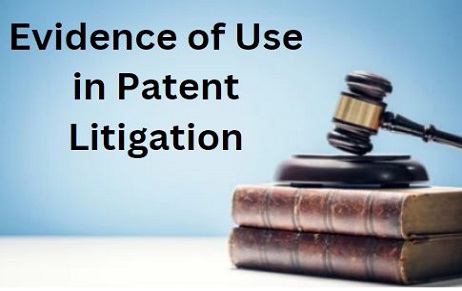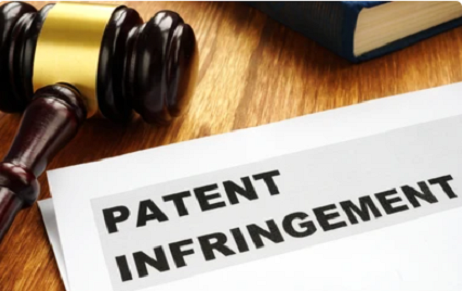All over the world today businesses strive for growth by maintaining a competitive edge in…
Bruce N. Saffran Vs Johnson & Johnson and Cordis Corporation
Introduction
A patent infringement suit filed by Bruce N. Saffran, a New Jersey Radiologist (“Plaintiff”) against Johnson & Johnson (J&J) and Cordis Corporation (“Defendants”) claiming that defendants directly infringed U.S. Patent No. 5,653,760 (filed Aug. 9, 1995) (the `760 patent;) entitled “Method and Apparatus for Managing Macromolecular Distribution”. Defendants’ accused products are the Cypher drug-eluting stents (including the Cypher Select and Cypher Select Plus) for which they were nailed with $482 million verdict. Case ruled in United States District Court, E.D. Texas, Marshall Division.
About the patent ‘760
The ‘760 patent discloses a medical device preferably drug eluting implantation device used for the treatment of damaged tissues such as cardiac vessels and/or injured bones.
Claim 1 of the patent states:
A flexible fixation device for implantation into human or animal tissue to promote healing of a damaged tissue comprising:
a layer of flexible material that is minimally porous to macromolecules, said layer having a first and second major surface, the layer being capable of being shaped in three dimensions by manipulation by human hands, the first major surface of the layer being adapted to be placed adjacent to a damaged tissue,
the second major surface of the layer being adapted to be placed opposite to the damaged tissue,
the layer having material release means for release of an at least one treating material in a directional manner when said layer is placed adjacent to a damaged tissue, the device being flexible in three dimensions by manipulation by human hands,
the device being capable of substantially restricting the through passage of at least one type of macromolecule therethrough.
Dispute on Claim Elements by both Parties
| Claim Term/Phrase | Plaintiff’s Proposed Construction | Defendants’ Proposed Construction |
| 1. “device” | At least a layer as disclosed in the claim | “A single sheet of material” |
| Defendants’ Argument: Defendants seek a construction of “device” as “a single sheet of material.” Defendants argue the specification limits “device” to a single sheet of material.
Plaintiff’s Argument: Plaintiff argues that “device” should not be construed as a “single sheet of material” because there is no clear intention to limit the claim scope to a “sheet” in the specification. Instead, Plaintiff argues the specification shows that a “sheet” is merely a preferred embodiment of the “device.” Plaintiff also states that there are also other embodiments of the “device” disclosed in the specification such as “spray” or “coating” embodiments. Therefore, “device” cannot be limited to “sheet” because then it could not encompass the “spray” or “coating” embodiments discussed in the specification. Court Statement: Court refuses Defendants “sheet” limitation for the term “device”, and agrees with Plaintiff that a “sheet” is merely a preferred embodiment or “an embodiment” of the “device”. |
||
| 2. “layer” | “any thickness of material” | “a single layer (one and one layer)” |
| Regarding this issue, the court rejects Plaintiff’s appeal not to construe the term “layer” as “a single layer” and is in favor of Defendants’ statement “a single layer (one and one layer)” after reviewing of the intrinsic record. Hence, the Court construes the term “layer” as “a single layer.”
|
||
| 3. “that is minimally porous to macromolecules” | “that is capable of substantially containing macromolecules on one side of the material” | “that is substantially impermeable to macromolecules” |
| With this phrase, the Court agrees to Plaintiff’s statement “that is minimally porous to macromolecules” modifies the term “material” and not “layer” in the claim phrase, and rejects Defendants’ seeking to clarify that “a layer of flexible material that is minimally porous to macromolecules” does not encompass a layer on a stent that leaves uncovered mesh holes which allow macromolecules to freely move through them. | ||
| 4. “the layer having material release means for release of an at least one treating material in a directional manner when said layer is placed adjacent to a damaged tissue” | “to release a drug preferentially directionally or undirectionaly towards the damaged tissue when placed adjacent to the tissue” | “releasing the treating material solely in the direction of the damaged tissue” |
| The Court agrees with Plaintiff that the treating material is released “preferentially” in the direction/towards the damaged tissue which specification states multiple times that the drug is released “preferentially” towards the damaged tissue. The Court does not agrees with Defendants’ phrase “solely in the direction of the damaged tissue” as the word “solely” implies that the drug must be completely and only (i.e., 100%) directed towards the damaged tissue and thus considered to be too limiting and not supported in the specification like the “preferentially” language. | ||
| 5. “lysis of chemical bond” | “breaking a chemical bond” | “hydrolysis of chemical bond” |
| The Court agrees with Plaintiff’s phrase “lysis of chemical bond” meaning to be “breaking a chemical bond” and disagrees with Defendants’ argument for considering “lysis” to be shorthand of “hydrolysis”. | ||
Defendants’ Argument on above Court’s statement:
Defendants seek judgment as a matter of law (“JMOL”) that (1) there is no infringement; (2) the patent-in-suit is invalid; (3) there is no willful infringement; and (4) there was not sufficient evidence to support $482 million in damages.
1. Non-Infringement:
Defendants argue that they did not directly infringe any of the claims of ‘760 patent and states that there is no sufficient evidences to prove Cypher stents infringing Plaintiff’s claimed invention. But the Court based on the five disputed limitation concludes and proves Defendants product infringing Plaintiff’s ‘760 patent. The five points being:
a. Capable of Being Shaped in Three Dimensions by the Manipulation of Human Hands.
b. The Layer is “Minimally Porous” to Macromolecules.
c. The Material Release Means Limitation
d. The “Device” Being Flexible in Three Dimensions by Manipulation of Human Hands
e. The Device Being Capable of Substantially Restricting the Through Passage of at least One Type of Macromolecule.
2. Validity:
Defendants seeks that claims of ‘760 patent is invalid and is rendered obvious in the light of (1) U.S. Patent No. 5,282,823 (“Schwartz”); (2) Schwartz in combination with U.S. Patent No. 5,545,208 (“Wolff”); and (3) Schwartz in combination with Langer, R.S. & Peppas, N.A., Present and Future Applications of Biomaterials in Controlled Drug Delivery Systems, Biomaterials 2:201-14 (1981) (“Langer”). However, Plaintiff provided sufficient evidences that the `760 Patent was not obvious in light of Schwartz, Schwartz in combination with Langer, or Schwartz in combination with Wolff. Hence, the Court DENIES Defendants’ motion for judgment as a matter of law on the grounds of invalidity.
3. `Willful Infringement:
Due to lack of sufficient proofs/evidence provided by Plaintiff, the Court GRANTS Defendants’ motion for JMOL stating that Defendants did not willfully infringe the ‘760 patent.
4. Damages:
Defendants seek judgment as a matter of law that they would not award Saffran $482 million in damages arguing that licenses relied on by Plaintiff were improper. But the Court DENIES Defendants’ motion for JMOL and concludes there are sufficient evidence supports to find damages & 482 million.
Conclusion:
From the above law suit it is found that Defendants’ motion for JMOL is GRANTED-in-part and DENIED-in-part. The Court DENIES Defendants’ motion for JMOL on the issues of infringement, validity, and damages because the Court concludes that sufficient evidence supports the jury’s verdict on these issues. The Court, however, GRANTS Defendants’ motion for JMOL on the issue of willful infringement because the Court holds, as a matter of law, that there was no willful infringement. Had, the Defendants’ proposed product been modified in either its structural and/or functional aspects, it would not have infringed Saffran’s claimed invention. But finally due to proper and core analysis on the overall case with substantial evidences, the Court has rendered a justified verdict saving the Plaintiff from heavy damages by awarding him $482 million.
Author – Minusmita Ray,
Patent Consultant, IIPRD.
The Author of the Blog can be reached: [email protected].


